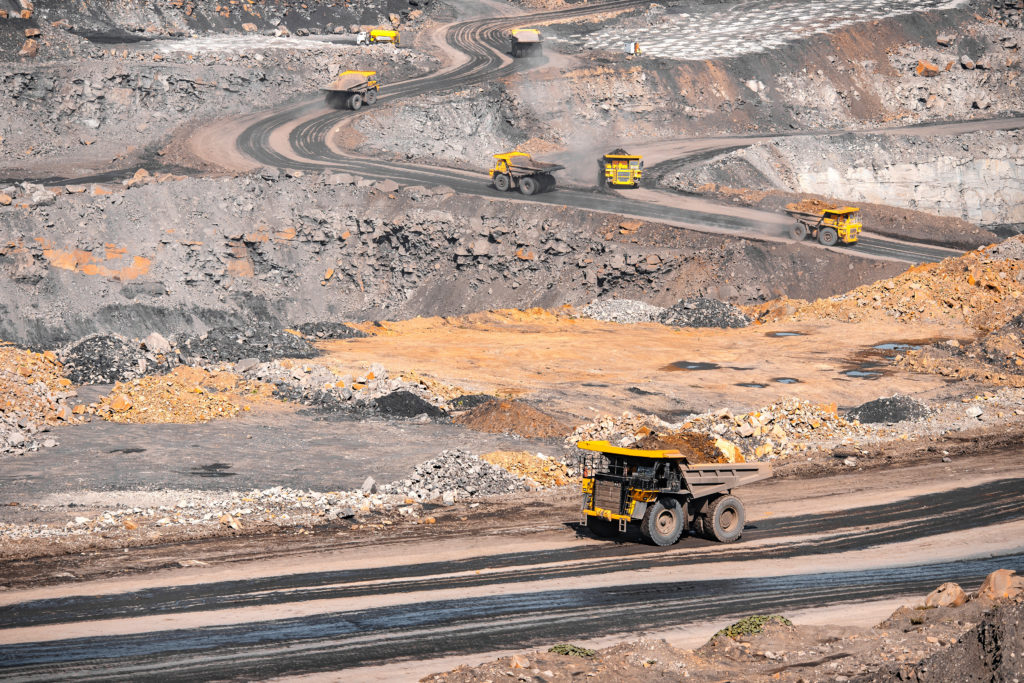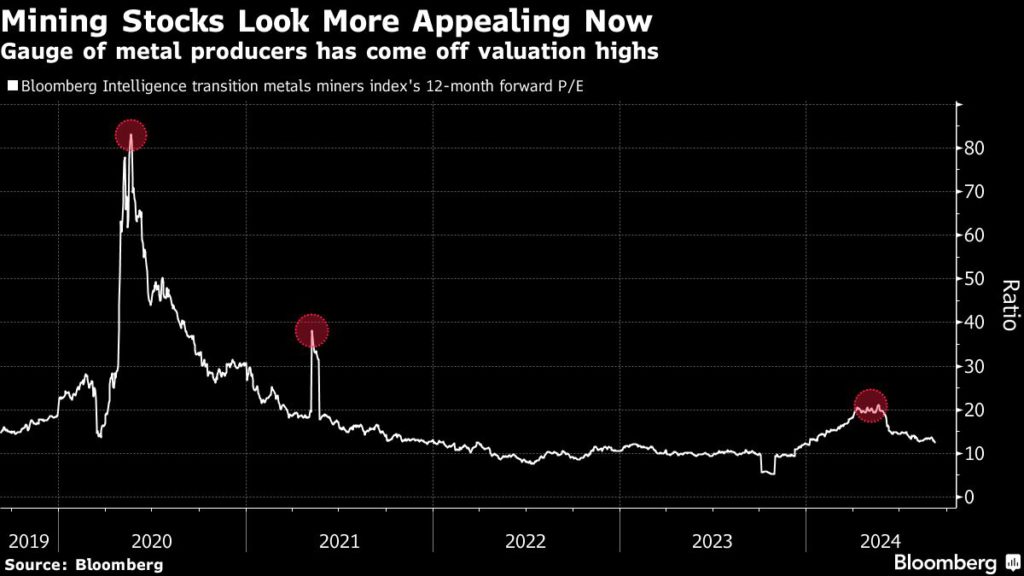Green funds with $14 billion eye first mining bets after slump

Managers of a group of Mirova SA green funds, which have assets totaling about $14 billion, are looking to add mining stocks for the first time as valuations of metal producers tumble.
Price declines for key materials like copper, nickel and lithium mean that many companies poised to benefit from the world’s shift away from fossil fuels are now under-priced, according to Jens Peers, co-manager of Mirova’s global sustainable equity strategy.
Annual demand for energy transition metals will roughly double by mid-century from 2023 levels under more aggressive action to hit net zero goals, according to BloombergNEF.
“If you start seeing that acceleration in the energy transition and miners start investing in higher capacity, the current valuation is not reflecting that possibility,” Peers said in an interview in Singapore.
Leading miners have seen their valuations decline as slowing growth for electric cars and a weaker economy in China curtail demand for some commodities. Copper, a crucial material for electrification, has retreated more than 17% from a record reached in May. Battery metals including lithium and nickel are hovering near multi-year lows.
Shares of BHP Group Ltd., the world’s largest miner, have declined more than 23% in Sydney this year, close to a two-year low.

Mirova’s Luxembourg-domiciled fund, which has $5.9 billion in assets and is compliant with the European Union’s Article 9 green investments rule — the strictest category for sustainable products, has posted gains of more than 15% this year.
By adding investments in mining, that fund would become the largest among more than 30 Article 9 peers to have exposure to the industry, according to data compiled by Bloomberg.
Mirova’s rethink on mining comes as a gauge of energy transition metal producers — which includes BHP, Glencore Plc and Anglo American Plc — is trading at 12.5 times forward earnings, well below its peak of more than 80 times in 2020 and down sharply from earlier this year.
The reappraisal also highlights a debate around so-called transition strategies, and the need to direct capital to help companies reduce their environmental impact rather than exclude them from portfolios.
“We’re really asking ourselves a lot of questions about that transition,” Peers said. “Sometimes you cannot create a positive impact without having some companies in the value chain that you know by definition have some negative impact as well.”
(By Ishika Mookerjee)
More News
Rio Tinto, Founders Factory’s Mining Tech Accelerator invests in startups from US and OZ
April 23, 2025 | 04:02 pm
{{ commodity.name }}
{{ post.title }}
{{ post.date }}



Comments